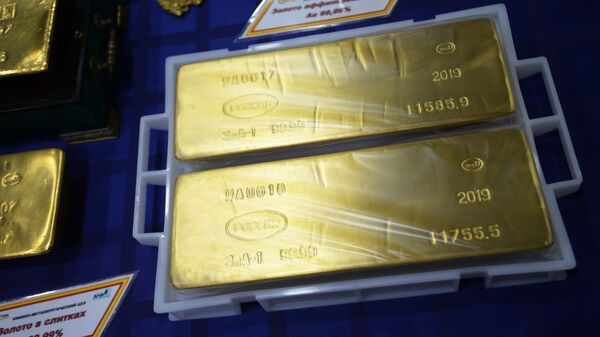Central banks bought 374 tonnes of gold in the first half of this year, which is the largest-ever acquisition by public institutions in the first 6 months of a calendar year, The Financial Times reports, citing the World Gold Council. They bought bullions worth a record $15.7 billion, accounting for one-sixth of total gold demand since the beginning of 2019.
The leaders of the new gold rush are the central banks of Poland, China and Russia, diversifying their reserves at the expense of the dollar. The Russian Central Bank has stocked up 96.4 tonnes of gold since January, confirming last week that the country’s total gold reserves had reached $100.3 billion by July 1. At the same time, China bought 74 tonnes of the precious metal in the six-month period through May.
These and other countries’ central banks have kept up with last year’s trend. In 2018, they acquired more precious metal than any year since 1971 when the gold standard, meaning the peg of the national currency to gold, ended.
Investors are also piling up gold holdings and opting for gold-backed exchange-traded funds (ETF). They are being driven by the softened stance of central banks, including a European Central Bank decision to cease limiting sales of the precious metal, amid geopolitical uncertainty and rising prices. While year-on-year demand rose by 8 percent and reached 1,123 tonnes, ETF gold holdings hit a six-year record of 2,548 tonnes in the second quarter. Overall, demand peaked to a three-year high in the first six months of this year. Gold prices, however, are continuing their confident climb, growing nearly 1.6 percent per year, and by a whopping 11 percent over the past two months, Market Watch reported recently.
UK-listed funds have bought three-quarters of traded gold products, as The Financial Times points out, linking the trend to the uncertainty over electing the next prime minister and looming scenario of a hard Brexit, which could send the pound down. German investors have also turned to gold-backed ETFs amid the tensions over the US-China trade row and Washington’s standoff with Tehran.
The gold shopping spree has been accompanied by several states promoting a shift from the dollar to national currencies in bilateral trade. The trend of abandoning the dollar has notably been seen in a recent report on the economies of the BRICS countries, which have reduced the use of the greenback in mutual trade by 20%.
Last month, Russia and China signed an agreement on increasing trade in national currencies to reduce dependence on the dollar, with total trade using this mechanism expected to rise to as much as 50 percent in the coming years. Russian President Vladimir Putin earlier accused the US of using the dollar as a tool of pressure against other countries, and suggested that the global role of this currency should be reconsidered.


